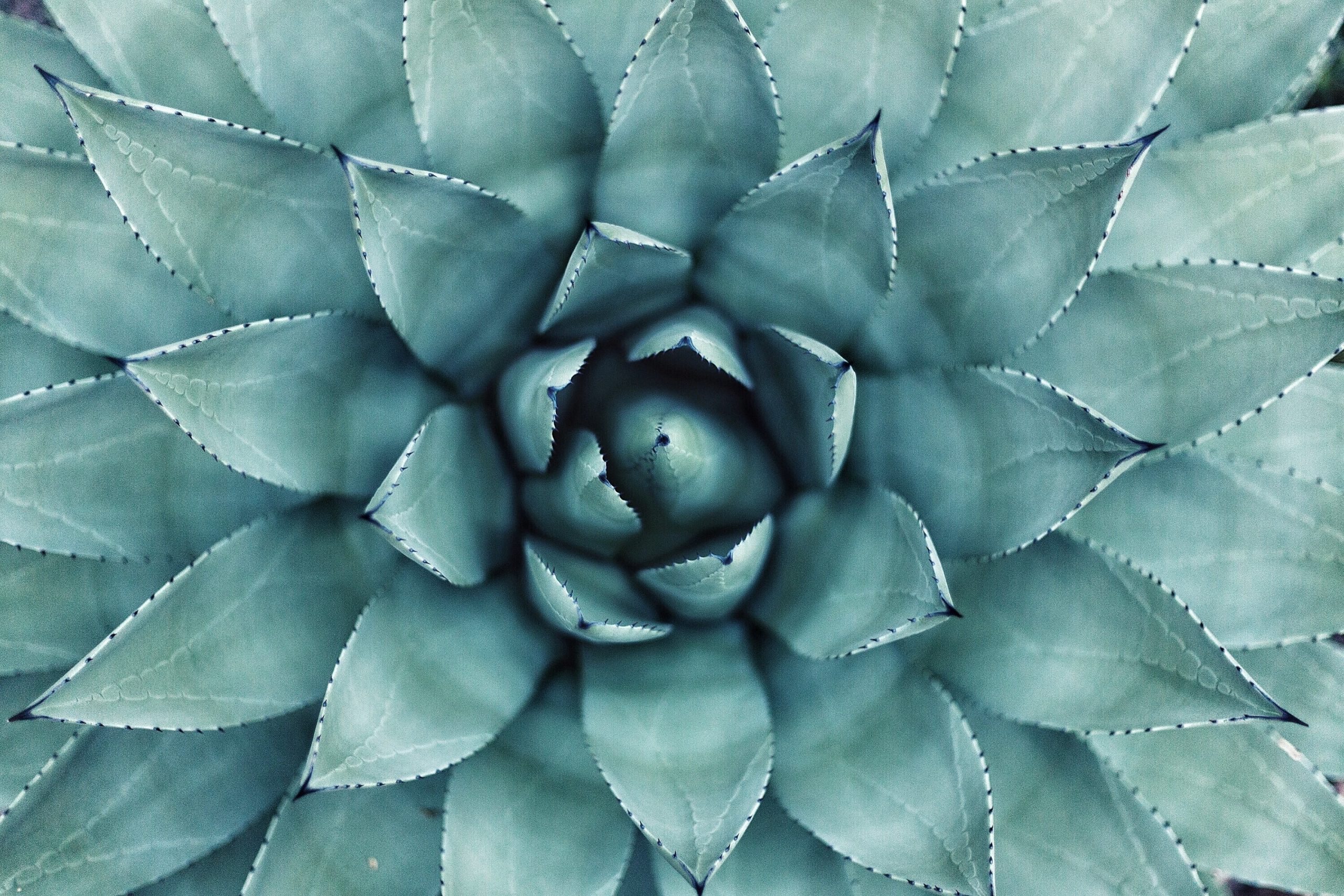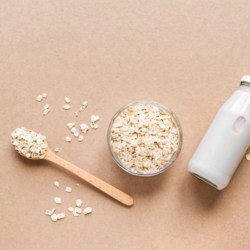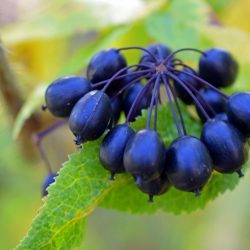Aloe vera is a medicinal plant with a variety of uses, depending on whether you use its dried sap (latex) or the translucent gel at the heart of its leaves. Dried sap is a powerful laxative. The gel is used to treat wounds, stings and minor burns, and to combat certain skin infections.
A little history
For thousands of years, many civilisations and cultures have revered aloe vera, to the point of dubbing it the divine plant. The exact origin of the use of aloe as a medicinal plant remains uncertain. However, there is historical evidence that it has been used for over 5,000 years. It was used in various parts of the world, including southern Europe, Asia, northern Africa, America and the Far East. Despite frequent mention of the Aloe vera species in numerous writings, it was often confused with other species and misidentified.
Originally from North Africa, Aloe vera was introduced to America. It spread to the West Indies and Venezuela, before being widely cultivated in the subtropical regions of the United States.
Sumerian civilisation
Aloe vera, a medicinal plant with ancestral uses, dates back 6,000 years. The Sumerians were the first to mention its laxative properties on a clay tablet. The Assyrians and Egyptians also used aloe vera, as indicated by ancient documents and the Ebers papyrus.
Egyptian hieroglyphics reveal its anti-ageing properties. In ancient times, around the Mediterranean, a Leyden papyrus from the 3rd century AD, considered to be the oldest “alchemical” text , included aloe vera in a recipe. Aloe vera was known to have healing and wound-healing properties, and was even used to prevent poisons.
Sumerian tablets dating back to 2100 BC, found at Nippur in 1948, are among the earliest traces of the therapeutic use of aloe vera. Drawings of the plant dating back to 4000 BC were even discovered in an Egyptian temple.
Aloe vera also appears in the Bible. In Numbers, the term “aloe” seems to refer to a small, hardy tree from the region, rather than the plant itself. The Song of Songs mentions “aloe wood”, probably the resin of the Aquilaria agallocha tree from Tibet. On the other hand, the Gospel according to Saint John describes Nicodemus bringing a mixture of aloes and myrrh to embalm Jesus, referring to the aloe vera exported by the Arabs to Palestine.
Chinese and Indian civilisations
The Pen T’sao, an ancient Chinese treatise dating from the time of the emperor Shen Nong (2700 BC), describes aloe vera. The plant is classified as having important therapeutic virtues. Doctors of the time called it the “Remedy of Harmony”. They used it to treat burns and skin problems. Around 700-800 AD, its use spread. It was used to treat sinusitis, fevers and infantile convulsions. In the 8th century, the poet Liu Yu Xi recounts how he cured resistant eczema. He used a mixture of aloe and liquorice. Before battles, samurai would smear themselves with aloe pulp for spiritual protection. Li Shih-Shen (1518-1593) also used aloe vera in his pharmacopoeia. Modern Chinese medicine uses it to treat arteriosclerosis.
Hindus call Aloe vera “the silent healer”. It features prominently in the Atharvaveda, the fundamental text of Hinduism. Aloe vera is a major plant in Ayurvedic medicine. Considered sacred, it played a role in sacrificial rituals. Even today, aloe leaves placed on funeral pyres symbolise rebirth and eternity.
Mesopotamian and Egyptian civilisations
Clay tablets engraved with cuneiform characters dating back to 2000 BC mention Aloe vera. These tablets, discovered in the ruins of ancient Elba in 1973, bear witness to its ancient use. The Semitic tribes of Mesopotamia used to hang Aloe vera over their doors to ward off evil spirits.
Around temples, pyramids and along the roads leading to the Valley of the Kings,Aloe vera played an essential role in ancient Egypt. It was planted to accompany the pharaoh on his journey to the afterlife. It was used to care for and nourish him during this passage. When it flowered, it was a sign that the deceased had reached the “other shore”. Egyptian priests used the “plant of immortality” in their funeral rites, particularly in the embalming formula.
The ancient Egyptians, pioneers of the clyster, used Aloe vera in purgative enemas. According to Egyptian legend, Cleopatra’ s eyes owed their radiance to an Aloe vera-based eyewash. The secret of Nefertiti ‘s beautiful skin and complexion lay in her baths in donkey’s milk and aloe pulp.
In Egypt today, aloe vera still symbolises happiness and protection, especially when placed inside homes.
The Ebers papyrus, one of the oldest documents on Egyptian medicine, dates back to 1550 BC. Written in Thebes, this hieroglyphic text includes numerous formulations based on Aloe vera. It details for the first time the medicinal properties attributed to the plant. This work, entitled “Book of the preparation of medicines for all parts of the human body”, is kept at the University of Leipzig in Germany. It is a valuable source on the historical use of Aloe vera in ancient medicine.
Arab civilisation
In Arab civilisation,Aloe ver a, nicknamed the “Lily of the Desert”, has been known for its virtues since ancient times. Around 600 BC, the Arabs were among the first to differentiate between the plant’s two juices and to develop a process for separating the gel from the sap. They crushed Aloe vera leaves with their bare feet and placed the resulting paste in goatskin bags. These bags were then exposed to the sun to dry out the contents completely, which were then reduced to powder.
These resinous extracts, mainly used as a laxative, also had other internal and external applications. They played a key role in the spread of Aloe across many countries in the Middle East and Asia.
Greco-Roman civilisation
Around 500 BC, the island of Socotra, located in the Arabian Sea and part of Yemeni territory, became a major centre for the cultivation of Aloe vera. According to legend, Aristotle convinced Alexander the Great to conquer this island specifically for its Aloe plantations. These were considered essential for the treatment of his wounded soldiers. It was believed that the juice of this plant conferred invulnerability on warriors. Around 330 BC, a preparation made from Aloe vera is even said to have cured Alexander the Great of an infection caused by a war wound.
In Greco-Roman civilisation, aloe vera symbolised beauty, patience, fortune and health. The Greek physician and botanist Dioscorides described its properties in his treatise De Materia Medica. Aloe had an important place in ancient medicine. It was used to treat boils, ENT irritations, dry skin, genital ulcers and bruises. The book “De Materia Medica”, written around 60 AD, was a reference on medicinal plants until the 15th century.
In his work Natural History, Pliny the Elder confirms these uses of aloe. He also mentions its effectiveness against leprosy and dysentery. He also mentions its use to reduce perspiration. Aloe was often mixed with honey and essence of rose to mask its bitterness.
By the 2nd century AD, aloe vera had become an integral part of Roman medicine. Physicians such as Antyllus, Aretaces and Galen (physician to Emperor Marcus Aurelius) used it frequently. The latter drew on the work of Hippocrates and Aristotle, themselves influenced by Egyptian and Indian writings. They described its laxative, coagulating and healing properties, and its effectiveness in treating boils, eye diseases, genital ulcers, hair loss and beautifying the skin.
European civilisation
Aloe vera was introduced to Europe between 1000 and 1300 AD. During the Crusades, the “Elixir of Jerusalem”, a mixture of palm wine, aloe vera pulp and hemp, was highly prized by the Knights Templar. They attributed their secret of longevity to it. During the Middle Ages and the Renaissance, the medicinal use of aloe spread throughout the world, including the colder regions of Europe. However, because of the cold climate, Northern Europeans showed little interest in the plant. On the other hand, in Spain, Portugal and Italy, where aloe vera was abundant, people attached great importance to it.
Around 1400-1500 AD, Spanish conquerors and missionaries spread the cultivation and use of Aloe vera to the New World. The Spanish sailors on the Santa Maria, decimated by malnutrition and disease, were saved by this plant. In his logs, Christopher Columbus called it the “doctor in a jar”. He wrote: “Four plants are essential to human life: wheat, vine, olive and aloe. The first nourishes you, the second delights you, the third harmonises you and the fourth heals you”.
The bitter-tasting tincture of aloe vera was also used to discourage children from putting their fingers in their mouths.
Native American civilisation
In Amerindian civilisation, aloe, alongside agave, was one of the 16 sacred plants. The Amerindians cooked aloe leaves under ashes before eating them. They used the pulp to stop haemorrhaging and heal wounds. Fermented aloe gel was reputed to ‘calm’ the stomach, cleanse the kidneys and bladder, dissolve stones, stop coughs, relieve chest flux and induce menstruation. Young Indian women used to apply aloe juice to their faces to attract and repel parasites.
In the Maya culture, aloe gel was used as a poultice for migraines. Mayan women applied it to their breasts to wean their babies, who were put off by the bitterness of the plant. Before hunting or war, warriors rubbed aloe pulp on their bodies.
For the Mazahuas, Aloe vera was the magic plant par excellence, believed to cure all illnesses, provide strength and clear the minds of the insane, drunk and disorientated. According to Indian tradition, if pulque makes you crazy, aloe wine cures madness. The Jivaros called it “the doctor of heaven”, believing it made them invulnerable.
In the 16th century, it was the Spanish and Portuguese Jesuit priests who influenced the cultivation of Aloe vera in America. They imported plants to the Barbados islands in the Caribbean, marking the development of its use in the American colonies.
Nowadays
What are the uses of aloe vera juice?
A clinical trial revealed that taking a tablespoon of Aloe vera juice orally twice a day for at least 2 weeks in diabetic patients reduced blood glucose and triglyceride levels. However, cholesterol levels remained unchanged. These results indicate the potential of Aloe vera juice as an anti-diabetic treatment.
In the West Indies , Aloe vera gel is used to combat diabetes. Inhabitants also use the juice of whole leaves to treat asthma attacks, by taking 3 teaspoons every 5 minutes. For headaches, tired eyes and fever, they apply compresses soaked in Aloe vera juice to the forehead. In Cuba, a traditional recipe for fighting colds is to mix Aloe vera juice with rum and sugar.
Aloe vera juice, which is less concentrated than gel, is a purifying drink. A three-week course of treatment, particularly at the change of season, helps to cleanse the body and eliminate toxins, thus contributing to optimal organ function.
A study published in the Journal of Alternative and Complementary Medicine showed that Aloe vera significantly reduces blood sugar and glycated haemoglobin levels in diabetic patients. Its consumption could compensate for the failure of the pancreas to produce insulin.
Several virtues are often attributed to Aloe vera juice, such as anti-fatigue action, a stimulating effect on the immune system, action against hair loss, as well as a blood purifying and antiviral effect. However, these benefits have not yet been scientifically validated. Discretion should therefore be exercised when seeking information on these aspects.
What are the properties of aloe vera gel?
A great deal of research has explored the pharmacological effects of Aloe vera, which is used in various forms for internal and external applications. Several active substances have been found in its latex and gel, but the specific mechanisms of action of all these compounds remain to be elucidated.Aloe vera and its compounds act through a multiplicity of mechanisms, influencing various biological and genetic activities. The synergistic action of the various compounds is often emphasised, rather than the isolated effect of a specific substance. This synergy gives the plant significant therapeutic potential, helping to prevent and treat a range of pathologies.
Gastrointestinal disorders
Aloe vera could help relieve the symptoms of ulcerative colitis, a chronic inflammatory bowel disease. A clinical study involving around a hundred people suggested that consuming 100 ml of Aloe vera gel twice a day could be beneficial.
For ulcerative colitis (haemorrhagic rectocolitis), an autoimmune disease of the colon and rectum characterised by chronic recurrent ulcerations, a double-blind placebo-controlled trial involving 44 patients showed that ingesting 100 ml of Aloe vera gel twice a day for 4 weeks was more effective than placebo in improving the patients’ condition.
Gastric ulcers are characterised by a loss of substance in the gastric mucosa. It results from an imbalance between factors that attack the mucosa (such as Helicobacter pylori and hydrochloric acid) and defence mechanisms. Two studies on rats have shown that Aloe vera, alone or in combination with sucralfates, improves gastric ulcer healing by increasing IL-10 levels and reducing leucocyte adhesion and TNF-alpha levels.
The anti-ulcer activity of Aloe vera gel is attributed to various mechanisms, including an anti-inflammatory effect, stimulation of mucus production and regulation of gastric secretions. A study in rats also attributed a cytoprotective action to Aloe vera, potentially due to increased mucus production, increased blood flow in the intestinal mucosa and increased phospholipid content.
Barbaloin, a compound in Aloe vera, acts as a laxative. In the large intestine, it metamorphoses into aloe-emodin-9-anthrone. This process stimulates peristalsis and increases the water content, thereby facilitating intestinal transit.
Action on metabolism
An anti-diabetic action has been demonstrated in a streptozotocin-induced diabetes model. Aloe gel has an anti-inflammatory action in non-insulin-dependent diabetes.
Diabetes mellitus is characterised by chronic hyperglycaemia and metabolic imbalances affecting carbohydrates, fats and proteins. There are two main types: type 1 diabetes (insulin-dependent) and type 2 diabetes (non-insulin-dependent).
Aloe vera is traditionally used to treat diabetes in Latin America, the Arabian Peninsula and India. Studies suggest that it is effective in reducing chronic hyperglycaemia and improving the lipid profile, thereby reducing the risk of atherosclerosis and cardiovascular disease.
A clinical trial conducted by Amazigh (1985) on 5,000 diabetic patients showed that Aloe vera gel, taken orally, significantly reduced cholesterol, triglyceride and blood glucose levels.
A 2010 summary reports that 5 out of 7 clinical studies indicate that Aloe vera gel can lower blood sugar levels in diabetic or pre-diabetic patients. However, these studies have methodological shortcomings.
In 2009, a study demonstrated the hypoglycaemic effect of Aloe vera in uncontrolled diabetic patients undergoing antidiabetic treatment (metformin and glibenclamide), revealing a significant reduction in fasting glycaemia and glycated haemoglobin (HbA1c), as well as a reduction in triglycerides.
Animal studies also confirm the hypoglycaemic efficacy of Aloe vera gel. The gel and its phytosterols have been shown to reduce glycaemia over the long term in diabetic mice, suggesting a potential use in the treatment of type 2 diabetes. In addition, administration of Aloe vera gel to diabetic rats showed a reduction in glycaemia, liver transaminases, cholesterol and triglycerides, as well as an improvement in plasma insulin and HDL cholesterol.
Anti-inflammatory
Aloe vera acts on the arachidonic acid pathway by inhibiting cyclooxygenase, revealing anti-inflammatory activity in various models of inflammation and in response to irritants. The translucent gel of Aloe vera leaves, containing salicylates, blocks the secretion of histamine, a key element in the inflammatory reaction. However, the precise mechanisms behind its healing properties remain poorly understood.
In terms of anti-allergic properties, the immediate allergic reaction is triggered by contact of an allergen with IgE antibodies on mast cells. This leads to mast cell degranulation and the release of mediators such as histamine and bradykinin. Mast cell degranulation results from the entry of calcium Ca²⁺ into the cell. Drugs that increase intracellular cyclic AMP (cAMP), such as theophylline and adrenaline, oppose histamine release.
An in vitro study on guinea pig lung tissue showed that alprogen, a glycoprotein in Aloe vera gel, significantly reduced the release of leukotrienes and histamine, blocking the influx of Ca²⁺ during mast cell activation.
The anti-inflammatory activity of Aloe vera gel is confirmed by in vitro and in vivo studies. Fresh gel reduced acute inflammation in rats, although its efficacy on chronic inflammation remains to be determined. The bradykinase present in the gel seems to be responsible for this activity. It breaks down bradykinin, a mediator of inflammation. It also inhibits mediators such as thromboxane B2 and prostaglandin F2, and plant sterols in Aloe vera gel have been shown to reduce inflammation in mice by 37%. Lupeol demonstrated the most powerful anti-inflammatory effect in a dose-dependent manner.
Immunomodulating and anti-infectious
Aloe vera influences the immune system, increasing the humoral immune response and decreasing cell-mediated immunity.
One study highlighted the antioxidant potential of Aloe vera extract, attributed to the presence of polysaccharides and flavonoids. The extract from a 3-year-old plant showed stronger anti-free radical activity (72.19%) than BHT (hydroxytoluene butyl, 70.52%) and α-tocopherol (65.65%). The age of the plant influences its composition and antioxidant activity, as recent studies suggest. This antioxidant activity is associated with elements such as glutathione, various phenolic compounds and superoxide dismutase.
Anti-infectious properties:
- Antibacterial: Aloe vera extract has demonstrated antibacterial effects in vitro against Gram and Gram Ŕ bacteria, including multi-resistant strains such as Staphylococcus aureus and Escherichia coli.Aloe-emodin inhibited the growth of Helicobacter pylori in a dose-dependent manner.
- Antifungal: A glycolic extract of Aloe vera leaves inhibited the growth of Candida albicans in vitro and reduced the formation of its germ tubes. Oral administration of gel reduced the growth of Candida albicans in the spleen and kidneys of mice.
In the context of HIV infection, HIV affects CD4 T lymphocytes and antigen-presenting cells.Acemannan, a component of Aloe vera, demonstrated dose-dependent synergy with azidothymidine (AZT) against HIV-1 and improved CD4 lymphocyte levels. It also showed activity against HIV-1 in vitro by modifying the glycosylation process of the virus.
The immunostimulant properties of Aloe vera have been demonstrated by studies showing the immunomodulatory activity of the polysaccharides contained in the gel. Acemannan is the main immunomodulatory compound, but lectins and aleoride, also present in the gel, help to stimulate the immune system.
On genital herpes
Aloe gel is known to promote healing of lesions. Clinical studies have shown that a cream containing whole aloe leaf extract is effective in treating male genital herpes, compared with a placebo.
For herpes simplex virus (HSV) infections, which include mucocutaneous herpes and meningitis,aciclovir is commonly used as an antiviral agent. However, in vitro tests have shown that acemannan, a component of aloe vera, acts in dose-dependent synergy with aciclovir against HSV-1. Used alone, acemannan reduced the cytopathogenic effects of HSV-1 by 22%, and this reduction reached 90% when combined with aciclovir.
In another in vitro trial, a purified sample of aloe-emodin was tested against several viruses, including herpes simplex virus types 1 and 2, varicella-zoster virus, rabies virus and influenza virus, to assess its anti-infective effect. Aloe-emodin inactivated all the viruses tested, with the exception of rhinovirus and adenovirus. This anthraquinone therefore proved to be a virucidal agent.
These findings suggest that components of Aloe vera, in particular acemannan and aloe-emodin, may offer promising or complementary therapeutic alternatives in the treatment of various viral infections, including herpes simplex.
Healing
Thanks to its high water content, which gives the gel its moisturising, insulating and protective properties, and its content of immunostimulant polysaccharides and the plant’s anti-inflammatory activity, aloe vera gel is widely used externally in cosmetic products and as a soothing, antipruritic adjunct treatment for dermatological conditions, or as a topical substance with protective properties in the treatment of burns and small skin lesions.
The healing properties of the gel on minor wounds and burns are well known, although it has no preventive effect on burns caused by radiotherapy. Animal studies have demonstrated the beneficial effects of Aloe vera on wound healing. Prostaglandins, carboxypeptidase and bradykinase are thought to help reduce inflammation and pain. Polysaccharides, such as mannose-6-phosphate, play an active role in the epithelialisation process. They are thought to promote fibroblast proliferation, which is essential for collagen deposition and tissue reorganisation.
Acemannan, another polysaccharide, is thought to increase the activity of white blood cells in wound healing. The moisturising properties of Aloe vera gel are not only due to the water it contains. They are also due to specific components that improve skin hydration. Cosmetic products containing freeze-dried Aloe vera gel have been shown to increase the hydration of the stratum corneum after application.
In addition, certain elements of Aloe vera promote tissue cross-linking and stimulate collagen production. This is achieved by activating cytokines and macrophages. The ascorbic acid in Aloe vera improves collagen synthesis and compensates for its breakdown. The water-rich gel prevents wounds from drying out and helps epithelial cells to migrate.
For burns
Aloe gel slightly reduces the healing time for 2nd degree burns, compared with a cream containing silver sulphadiazine. In a clinical study of 27 patients, burns treated with aloe vera gel healed faster, with an average healing time of 11.89 days, compared with 18 days for dressings impregnated with Vaseline.
A comparative trial analysed the efficacy of aloe vera gel versus 1% silver sulphadiazine cream on 50 patients. The results showed earlier healing and faster pain relief for the group treated with aloe vera gel, as well as being less costly.
A randomised clinical trial compared the application of a cream containing 0.5% aloe vera gel to that of sulphadiazine cream on 2nd degree burns. Patients treated with aloe vera gel healed more quickly. However, the study did not consider the difference to be statistically significant.
Experimental studies on animals have also confirmed the efficacy of Aloe vera in the treatment of burns. The results showed earlier re-epithelialisation and clearer healing with Aloe vera than with silver sulphadiazine and gauze dressings.
On wounds
A randomised double-blind study was conducted on the effects of an Aloe vera-based cream. This cream contained 0.5% gel, compared with a placebo cream, for postoperative pain after haemorrhoidectomy. Of the 49 patients, 24 used the Aloe vera cream and 25 the placebo. Applications were made three times a week for four weeks.
The researchers assessed pain using a visual analogue scale at different times after the operation. They also measured wound healing after 2 and 4 weeks. The results showed that patients treated with Aloe vera cream experienced significantly less pain. They also observed faster healing and reduced consumption of analgesics.
With regard to surgical wounds, a study on rats examined the effects of Aloe vera gel, alone or combined with microcurrents, on the healing of cutaneous wounds. The results showed that the combination of Aloe vera gel and microcurrents accelerated healing, suggesting a synergistic action.
One study involved a diabetic hypertensive patient with an ischaemic wound. Dressings impregnated with Aloe vera and collagen were used. After ten weeks, complete healing was noted. This underlines the effectiveness of Aloe vera in this case. However, further studies are needed to confirm these results.
In the case of post-haemorrhoidectomy wounds, Aloe vera has proved effective. It reduced pain and accelerated healing, thereby reducing the need for analgesics. These results highlight the potential of Aloe vera gel as an alternative treatment for wounds. However, more in-depth research is required before it can be used more widely.
Radiation protection
Aloe vera has shown limited effectiveness on skin exposed to more than 2,700 cGy of radiation. The same applies to the treatment of acute rectitis. Research indicates that an Aloe vera-based cream or gel does not provide any significant benefit against dermatitis caused by X-rays.
However, a 2013 trial involving 60 patients has shed new light. It showed that Aloe vera could improve radiation-induced dermatitis. However, this effect only became apparent after four weeks of continuous treatment.
In France, cancer accounts for around 26% of all deaths, making it the leading cause of death among men and the second most common among women. Cancer is characterised by the uncontrolled proliferation of abnormal cells, forming a malignant tumour and invading neighbouring tissues. In the face of this major pathology, research into new anti-cancer treatments is essential, especially in this age of multiple carcinogens.
One study explored the anti-tumour activity of Aloe vera against cutaneous papillomagenesis in mice. Four groups were formed for the study. The first was a control group. The second received topical treatment with Aloe vera gel. The third was treated orally. The final group combined the two treatments. All these groups were exposed to skin carcinogenesis. DMBA and croton oil, known for their carcinogenic and co-carcinogenic effects, were used.
Aloe vera has been shown to have an anti-tumour action, thanks to its antioxidants (vitamins A, C, E, glutathione peroxidase, selenium and zinc). This activity of antioxidant enzymes, modulated by anthraquinones (barbaloin, aloe-emodin, aloesin), is a key factor in this anti-tumour action.
Aloe-emodin plays a key role in inhibiting cell proliferation and inducing apoptosis in various cancers. It acts on key proteins and enzymes such as caspase-3, the Fas/APO1 receptor and the Bax protein.
On lichen planus
Although corticosteroids are the gold standard in the treatment of oral lichen planus, a dermatological condition marked by inflammatory eruptions,Aloe vera is showing promising results. Aloe vera is free from the frequent side effects of corticosteroids.
In a randomised double-blind study, 54 patients (34 women, 20 men) with oral lichen planus were divided into two groups. One group received Aloe vera gel, the other a placebo for 8 weeks. 81% of patients treated with Aloe vera showed improvement, compared with only 4% in the placebo group. What’s more, 7% of patients treated with Aloe vera achieved complete clinical remission.
In another randomised clinical trial, 46 patients were allocated to receive either Aloe vera mouthwash or triamcinolone acetonide. After 4 weeks, both treatments resulted in a significant reduction in lesion size. However, there was no significant difference between the two groups.
A third randomised study involved 40 patients (23 men, 17 women). It compared the efficacy of Aloe vera gel with triamcinolone acetonide. The results showed that Aloe vera gel was more effective in treating oral lichen planus.
In total, these studies on 152 subjects demonstrated the efficacy of Aloe vera compared with a placebo. They suggest its potential as an alternative treatment for oral lichen planus.
On psoriasis
A cream containing 70% aloe vera is slightly more effective in reducing the severity of lesions, and in fact improves people’s quality of life, than the conventional local topical containing 0.1% triamcinolone acetonide.
A double-blind study was conducted on 60 patients with mild to moderate psoriasis. This group included 36 men and 24 women, aged between 18 and 50 years. They had a mean PASI score of 9.3, with a mean disease duration of 8.5 years. The patients were divided into two groups. The first group received a placebo cream, while the second was treated with a hydrophilic cream containing 0.5% Aloe vera extract. The cream was applied three times a day for four weeks. The results showed a significant improvement in quality of life. The cure rate in the Aloe vera-treated group was 83%, compared with 7% for the placebo group.
A 2005 study called previous results into question. It compared a placebo gel with a commercial Aloe vera gel in patients with mild to moderate psoriasis. The gel was applied twice a day for four weeks. This study showed a significant improvement with the placebo.
A 2010 study was conducted on 80 subjects with mild to moderate psoriasis. It compared a cream containing 70% aloe vera with a cream containing 0.1% triamcinolone acetonide. The Aloe vera cream was slightly more effective in reducing lesions. However, the improvement in quality of life was similar in both groups.
These studies indicate that, although Aloe vera has a slight benefit, it does not offer any major advantages over conventional treatments in the treatment of psoriasis.
For other skin conditions and external mucous membranes
- Scabies: A Nigerian study successfully treated 5 scabies patients with Aloe vera gel. A comparison with benzyl benzoate lotion on 30 patients showed similar results in reducing itching and scabies lesions, with no notable side effects.
- Diaper rash: A comparative trial on 66 infants showed the efficacy of an Aloe vera-based cream in the treatment of diaper rash, although Calendula ointment was more effective. However, Aloe vera remains a safe and effective option.
- Seborrhoeic dermatitis: The use of Aloe vera extract reduced redness and pruritus in this common dermatosis, according to a 1999 study.
- Radiotherapy-induced mucositis: Two studies have produced contradictory results on the efficacy of Aloe vera-based mouthwashes in preventing mucositis and oral candidiasis, a complication of radiotherapy.
- Dental plaque and gingivitis: Toothpaste containing Aloe vera was found to be as effective as fluoride toothpaste. Another study showed that Aloe vera mouthwash significantly reduced dental plaque and gingivitis, with results inferior to chlorhexidine.
- Mouth ulcers: Acemannan, a polysaccharide in Aloe vera, reduced the size and pain of aphthous ulcers, although less effectively than triamcinolone acetonide. Aloe vera gel also reduced healing time.
- Other uses: Acemannan promotes dentin formation, stimulates proliferation and differentiation of dental pulp cells, acts on the extracellular matrix and mineralisation.
How to use it
No human toxicity tests have yet been carried out. There have only been cases of intoxication, mainly asymptomatic, mainly involving children who have eaten or been in contact with the plant. Symptoms such as eye irritation, erythema, pruritus, nausea, vomiting and diarrhoea have been documented. One case of anaphylactic shock has been linked to the ingestion of Ethiopian aloe juice. Animal studies have investigated the toxicity of the gel, sap and their components.
In mice, the LD50 of the extract was 120.65 mg/kg, making Aloe vera the most toxic of the 21 species tested. In vitro tests confirmed this toxicity. In contrast, the freeze-dried gel showed no toxicity in rats at doses of up to 5 g/kg. The undesirable effects reported for Aloe vera come mainly from the juice and are often associated with regular and excessive use, being rare with occasional use.
What are the contraindications?
- Aloe vera juice is not recommended for children under the age of 12. It is not recommended in cases of intestinal obstruction and stenosis, intestinal atony, appendicitis, inflammatory bowel disease, abdominal pain of unknown origin, severe dehydration with water and electrolyte depletion.
- Aloe juice is not recommended for people suffering from irritable bowel syndrome, haemorrhoids, digestive ulcers, cardiac(bradycardia) or renal disorders, hypothermia or malaise.
- Dried aloe latex should be avoided during pregnancy. Women who are breast-feeding should also refrain from taking it. The active substances in aloe vera pass into the milk in small quantities. Local application of aloe vera gel during pregnancy or while breast-feeding is possible, provided that application to the nipple is avoided.
- Given the risks associated with eating fresh aloe vera leaves, as a precautionary measure, the same contraindications apply as for aloe juice, particularly to pregnant or breast-feeding women, children and frail people.
- Taking dried aloe latex is contraindicated for people suffering from intestinal obstruction or narrowing, Crohn’s disease, ulcerative or haemorrhagic colitis, abdominal pain or severe dehydration.
Are there any side effects?
Taking dried aloe latex may cause abdominal pain or diarrhoea. If used regularly, like all irritant laxatives, it can cause a loss of mineral salts, particularly potassium. A drop in blood potassium levels can lead to potentially serious heart problems.
A chronic overdose of dried aloe latex can have dramatic consequences. These include constipation that is resistant to other treatments (dependency phenomenon), decalcification, heart problems, oedema, fatigue, etc. Lastly, taking aloe vera changes the colour of urine, which becomes reddish-brown.
However, repeated consumption of aloe vera juice can lead to laxative disease. This condition manifests itself through a variety of symptoms. These include nausea, vomiting and inflammatory bowel disorders with diarrhoea. There is also recto-colic melanosis, electrolyte imbalance with hypokalaemia, and renal dysfunction. There is also congestion and irritation of the pelvic organs.
The EMA advises against the prolonged use of stimulant laxatives. They can alter intestinal function and create dependency. If these laxatives are used on a daily basis, the cause of the constipation should be investigated. Preparations of aloe vera juice should only be considered if dietary changes are not enough to regulate transit. Local use of aloe vera gel may also cause contact dermatitis, erythema or phototoxicity.
Are there any risks of drug interactions?
The gel is a CYP3A4 and CYP2D6 inhibitor. There is a risk of drug interactions with anticancer drugs(bortezomib, gefitinib, imatinib) and tamoxifen.
Medical literature and clinical trials
- EUROPEAN MEDICINES AGENCY, European Union herbal monograph on Aloe barbadensis Mill. And on Aloe (various species, mainly Aloe ferox Mill. and its hybrids), folii succus siccatus, 22 November 2016 .
- DE WITTE P., The metabolism of anthranoid laxatives, Hepatogastroenterology, 1990 Dec.
- VAZQUEZ B. et al, Antiinflammatory activity of extracts from Aloe vera gel, J Ethnopharmacol, 1996 Dec.
- DAVIS R.H. et al, The isolation of an active inhibitory system from an extract of aloe vera. J Am Podiatr Med Assoc. 1991 May.
- FARRUGIA C.E. et al, The use of aloe vera in cancer radiation. An updated comprehensive review, Complement Ther Clin Pract, 2019 May.
- CHOONHAKARN C. et al, The efficacy of aloe vera gel in the treatment of oral lichen planus. Arandomizedcontrolled trial, Br J Dermatol. 2008 Mar.
- CHOONHAKARN C. et al. A prospective, randomized clinical trial comparing topical aloe vera with 0.1 % triamcinolone acetonide in mild to moderate plaque psoriasis. J Eur Acad Dermatol Venereol, 2010 Feb.
@soin.et.nature ✨️On compte plus de 420 espèces différentes d’Aloès ✨️La plus utilisée pour la peau est l’Aloe barbadensis Miller ✨️L’aloé était utilisé par les égyptiens pour embaumer les momies, sa réputation n’est plus à faire ! #viral#pourtoi #astuce#taches #petitbudget #perpignan #peau#cicatrice#rosacée #rosacea #peausensible #peauatopique #peausaine #bellepeau#conseilsbeaute #frenchpharmacie #frenchpharmacy #rougeurs#eczema#moinsdepenser #bienvieillir







